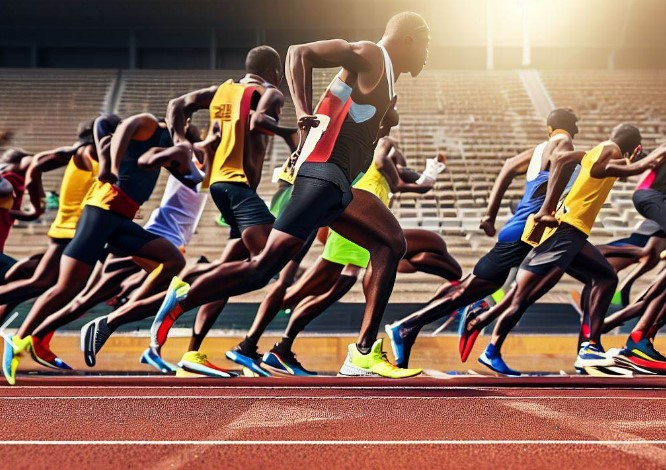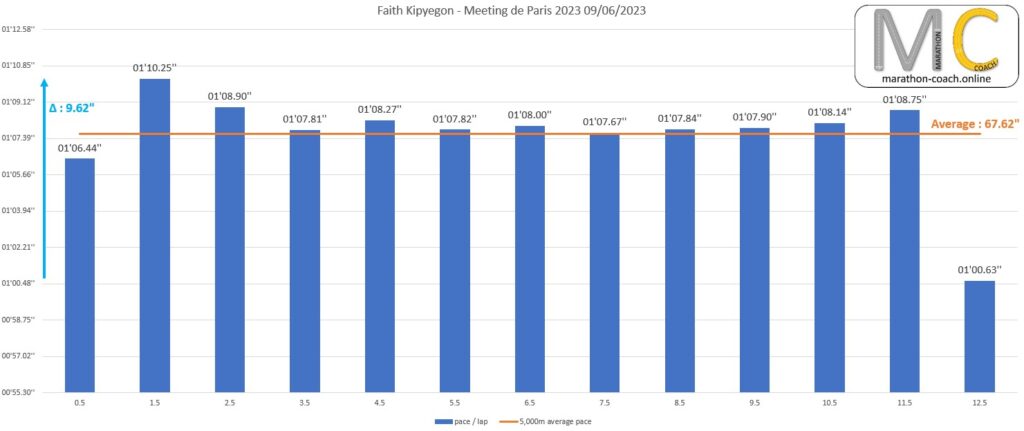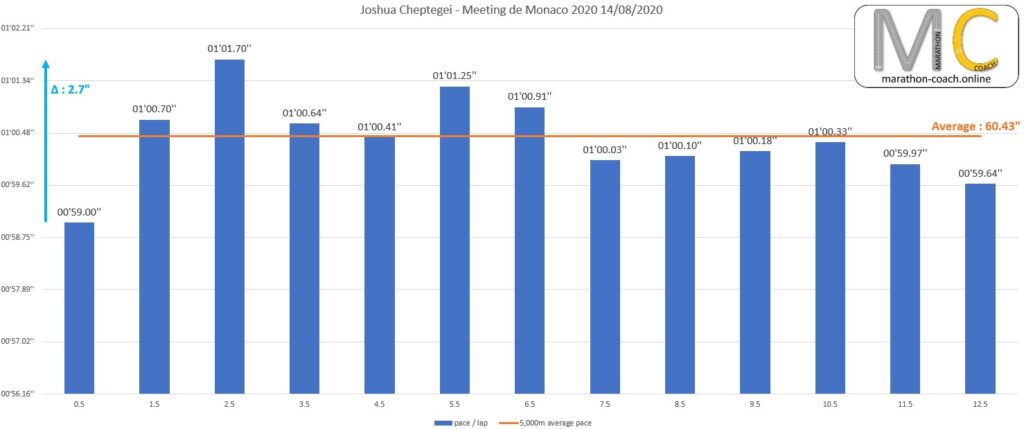In this blog post, I’m going to share with you some tips on how to run a fast 5km road race. Whether you’re a beginner or a seasoned runner, you can benefit from learning some pacing strategies that will help you achieve your personal best.
Pacing your best 5km
A 5km race is short enough that you can run it at a high intensity, but long enough that you need to be smart about how you distribute your energy. You don’t want to start too fast and burn out, but you also don’t want to leave too much in the tank and finish with regrets.

So how do you find the optimal pace for your 5km race? Here are some suggestions based on my experience and research:
- Start with a goal time and pace. You can use a recent race result, a time trial, or a prediction calculator to estimate your 5km potential. Then, divide your goal time by 3.1 to get your average pace per mile (or by 5 to get your average pace per kilometer, or by 12.5 if your race is on track and you want to have the lap pace). This will give you a target to aim for during the race.
If you have doubts ask your coach! - Do a proper warm-up. A 5km race requires a lot of speed, so you need to prepare your muscles and joints for the effort. A good warm-up should include some dynamic stretches, a 10-15 minute easy jog, and some strides (short bursts of speed) to activate your fast-twitch fibers. A warm-up will also help you avoid starting too fast, as your body will be ready to run at your goal pace from the beginning.
- Run by effort, not by pace. While having a target pace is helpful, you should also pay attention to how you feel during the race. Different factors such as hills, wind, temperature, and fatigue can affect your pace, so you need to adjust accordingly. A good rule of thumb is to run by even effort, meaning that you should maintain the same level of perceived exertion throughout the race. This will ensure that you don’t overexert yourself in the first mile or hold back too much in the last mile.
- Break the race into thirds. A common strategy for pacing a 5km race is to divide it into three segments: calm and controlled, steady and strong, and fast and furious. In the first mile (or kilometer), you should run at a comfortable but challenging pace, focusing on your breathing and form. In the second mile (or kilometer), you should increase your effort slightly and run at a steady and strong pace, passing other runners if possible. In the last mile (or kilometer), you should give it your all and run as fast as you can, using your arms and legs to propel yourself forward.
- Finish strong. The last part of the race is where you can make up some time and push yourself to the limit. You should try to accelerate gradually in the final stretch, using visual cues such as landmarks or other runners to motivate yourself. Don’t look at your watch or slow down until you cross the finish line. You might surprise yourself with how fast you can run when you dig deep.
Women World Record – Faith Kipyegon
One of the most amazing performances I have ever witnessed: Faith Kipyegon’s 5,000m world record.
If you don’t know who Faith Kipyegon is, she is a Kenyan middle-distance runner who has won multiple Olympic and world titles in the 1,500m. She is widely regarded as one of the best female runners of all time. But recently, she decided to challenge herself and step up to the 5,000m, a distance she had never raced before at a professional level.
On June 2th, 2023, at the Diamond League in Florence, Italy, she ran the 1,500m in 3’49.11″ to become the first woman in history to break the 3’50”-barrier, running the last lap in 58.81″
One week later, on June 9th, 2023, in Paris Diamond League, she ran the 5,000m in a stunning time of 14’05.20″.
But what impressed me the most was not just her final time, but her pacing throughout the race. She ran with such consistency and had a great final lap in 60″.

I was blown away by her performance. She showed that she is not only a great 1,500m runner, but also a versatile and adaptable athlete who can excel at any distance. She also showed that she is not afraid to take risks and try new things. She inspired me to challenge myself and push my limits as well.
Faith Kipyegon is a legend of the sport and a role model for runners everywhere. I can’t wait to see what she does next. Maybe she will go for the 10,000m world record next? Who knows? Anything is possible with her.
Women World Record – Gudaf Tsegay
On the 17th of September, in Eugene for the final of the Diamond League, the 5,000m world record was beaten by Gudaf Tsegay.
It was such a great performance, improving the world record by 5 seconds.
Gudaf Tsegay of Ethiopia smashed the world record, running an incredible 14’00.21″ at the Diamond League Prefontaine Classic, in USA.
The 26 year old Ethipian athlete nearly broke the 14 minutes barreer. The pacers launched Gudaf during the first 2 kilomters in 2’48” (Sinclaire Johnson) and 2’49” (Elise Cranny) on a world record pace.
The Ethipian Birke Haylom was leading the pack at km 3 with 8’26”. It was still a world record pace.
Only Beatrice Chebet (Kenya) was the only athlete who could keep up with Tsegay. Tsegay accelerated to finish alone with two laps to go. Chebet concluded with a PB in 14’05”.
Let’s look at the splits from this world record :
- First kilometer: 2’48.1″
- Second kilometer: 2’49.2″
- Third kilometer: 2’48.8″
- Fourth kilometer: 2’50.9″
- Fifth kilometer: 2’43.3″
The last kilometer was the fastest and brought the world record to 14’00.21″
Men World Record – Joshua Cheptegei
I want to talk about one of the most impressive feats in the history of running: Joshua Cheptegei’s 5km world record.
Joshua Cheptegei is a Ugandan long-distance runner who has been dominating the track and road events in recent years. He had the World records for 5km, 10km, 15km and 10,000m. He also won the gold medal in the 2019 World Championships for 10,000m.
But how did he manage to run 5km in just 12’35.36″, breaking the previous record by 27 seconds? That’s an average pace of 2’31” per kilometer, or 4’03” per mile. That’s faster than most of us can sprint for 100 meters!
Well, there are many factors that contributed to his amazing performance, such as his talent, training, nutrition, recovery and mindset. But in this post, I want to focus on one aspect that is often overlooked: his pacing strategy.
Pacing is the ability to distribute your energy and effort evenly throughout a race, so that you can finish as fast as possible without slowing down or burning out. Pacing is crucial for any distance, but especially for shorter races like 5km, where every second counts.
So how did Cheptegei pace his world record? Let’s take a look at his splits:
- First kilometer: 2’31”
- Second kilometer: 2’35”
- Third kilometer: 2’36”
- Fourth kilometer: 2’35”
- Fifth kilometer: 2’28”
As you can see, he ran a very consistent pace for the first four kilometers, only varying by a few seconds. He did not start too fast or too slow, but rather settled into a rhythm that he could maintain for most of the race. He also had the help of pacemakers and a light system on the track that showed him the target pace.
But what really made his record remarkable was his final kilometer. He unleashed a devastating kick and ran the last kilometer in 2’28”, which is faster than his first kilometer. He accelerated gradually and finished strong, leaving no doubt that he was the best in the world.

This shows that Cheptegei had a perfect balance of endurance and speed. He was able to run at a high intensity for a long time, and still have enough energy to sprint at the end. He also had a great sense of timing and confidence. He knew when to hold back and when to push hard.
So what can we learn from Cheptegei’s pacing strategy? Here are some takeaways:
- Know your goal pace and stick to it. Don’t get carried away by adrenaline or competition and run faster than you can sustain. Don’t start too slow either and lose precious time. Find a pace that is challenging but comfortable for you and try to keep it steady.
- Use external cues to help you pace yourself. You can use a watch, a GPS device, an app, a heart rate monitor or anything else that can give you feedback on your speed and distance. You can also run with a friend or a group that has a similar goal as you and follow their lead.
- Save some energy for the end. Don’t give everything you have in the first half of the race and then struggle to finish. Keep some reserve in your tank and unleash it in the last kilometer or mile. You will feel more satisfied and proud of yourself if you finish strong.
- Practice pacing in your training. Don’t just run randomly or at the same pace all the time. Incorporate different types of workouts that challenge your pacing skills, such as intervals, tempo runs, fartleks and progression runs. These will help you develop your speed, endurance and sense of pace.
- Enjoy the process and have fun. Running is not only about numbers and records. It’s also about having fun and enjoying the challenge. Don’t put too much pressure on yourself or get frustrated if you don’t hit your target pace every time. Learn from your mistakes and celebrate your achievements.
I hope this post has inspired you to improve your pacing strategy and run faster and better. If you want to watch Cheptegei’s world record run, you can find it on YouTube here:
The details of his race are on strava as well.
Conclusion
I hope these tips will help you run a fast 5K road race and achieve your goals. Remember that pacing is a skill that takes practice and experience, so don’t be discouraged if you don’t nail it on your first try. The more you race, the more you will learn about yourself and what works best for you.
After racing your best 5km, you can think about racing 10km.
Happy running!
